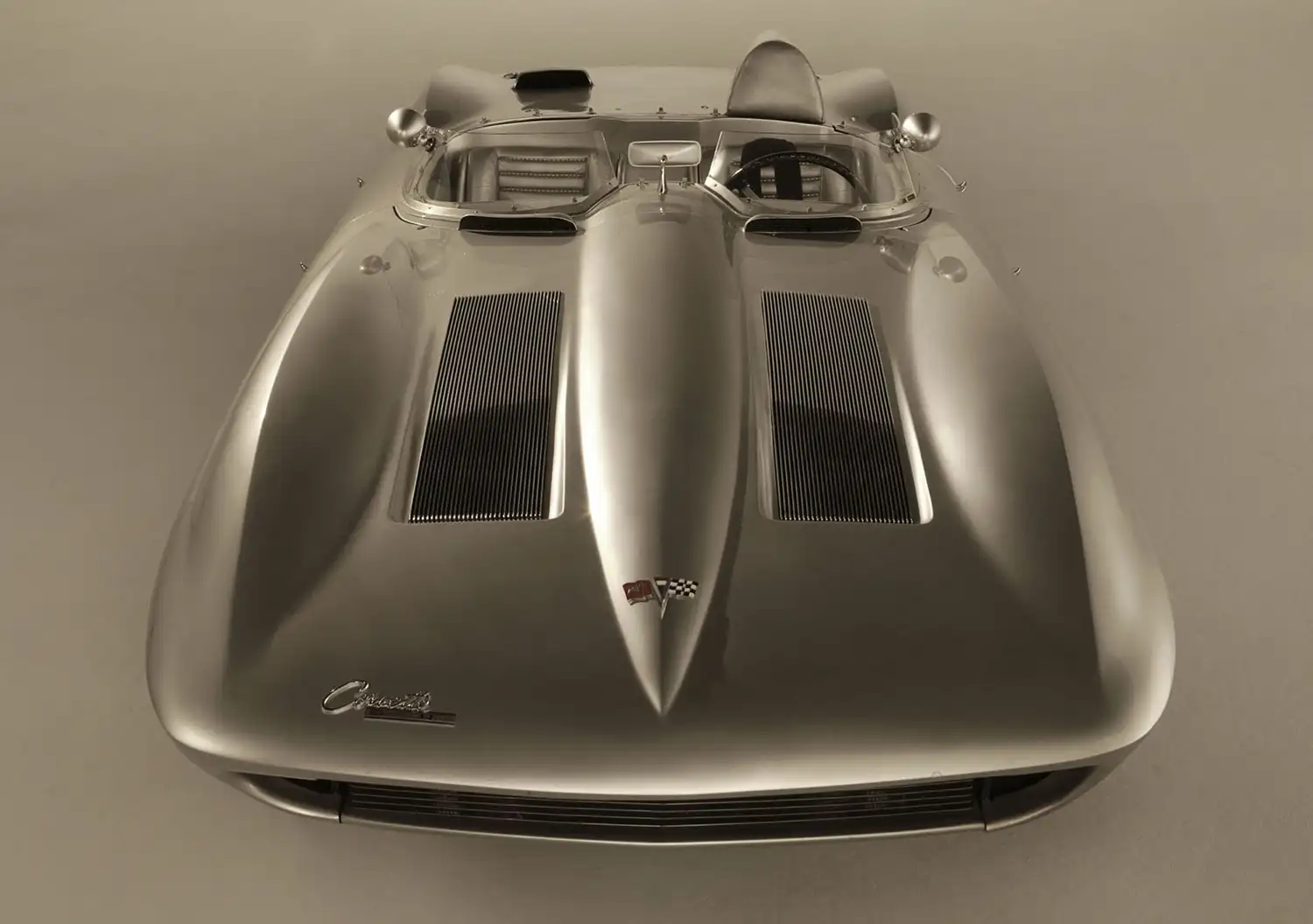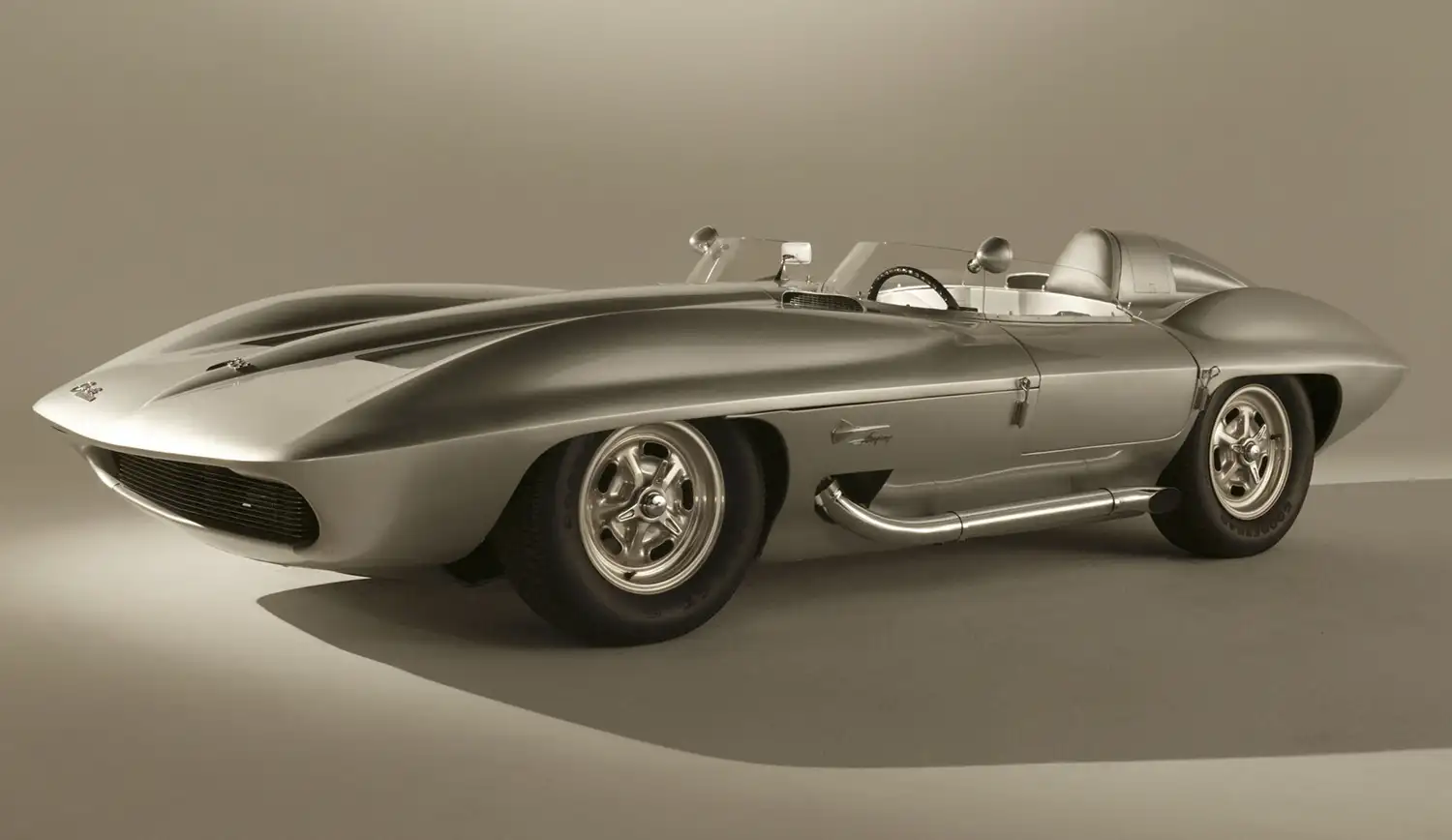
The 1959 Chevrolet Corvette Stingray Concept is a pivotal piece of automotive history, marking the transition from a bold racing prototype to a groundbreaking production car. This remarkable concept car, which would eventually inspire the legendary 1963 Corvette Sting Ray, represents a fusion of cutting-edge design and racing heritage.
A Racing Legacy Reimagined
The Stingray concept’s journey began with a focus on motorsport. Originally conceived as a race car, its creation was driven by a desire to push the boundaries of performance. The base of the Stingray was derived from the Corvette SS, a factory race car designed for the 24 Hours of Le Mans. However, following a ban on factory-sponsored racing, the Corvette SS project was halted, leaving behind valuable chassis and components.
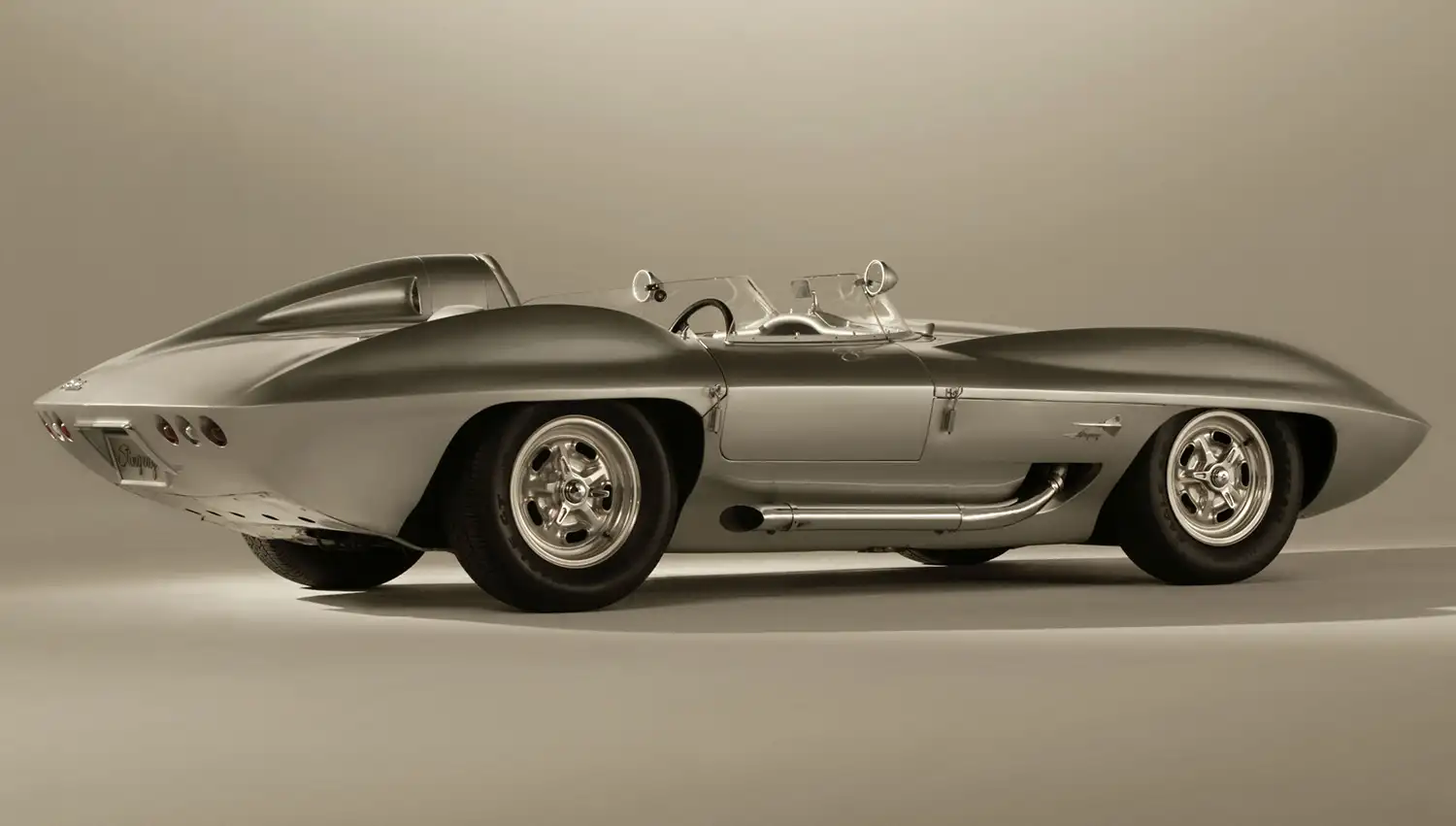
In 1959, Bill Mitchell, GM’s Vice President of Design, saw potential in the abandoned project. With a passion for both racing and innovative design, Mitchell acquired one of the SS chassis for just one dollar. He aimed to create a vehicle that combined high-performance with groundbreaking design, setting the stage for what would become the Stingray.
Design and Development
Mitchell enlisted the help of GM’s design team, including the young and talented designer Peter Brock. The result was a striking vehicle with a fuel-injected 4.6-liter V8 engine producing 311 horsepower. This engine was housed beneath a beautifully sculpted bonnet, showcasing Mitchell’s commitment to both form and function.
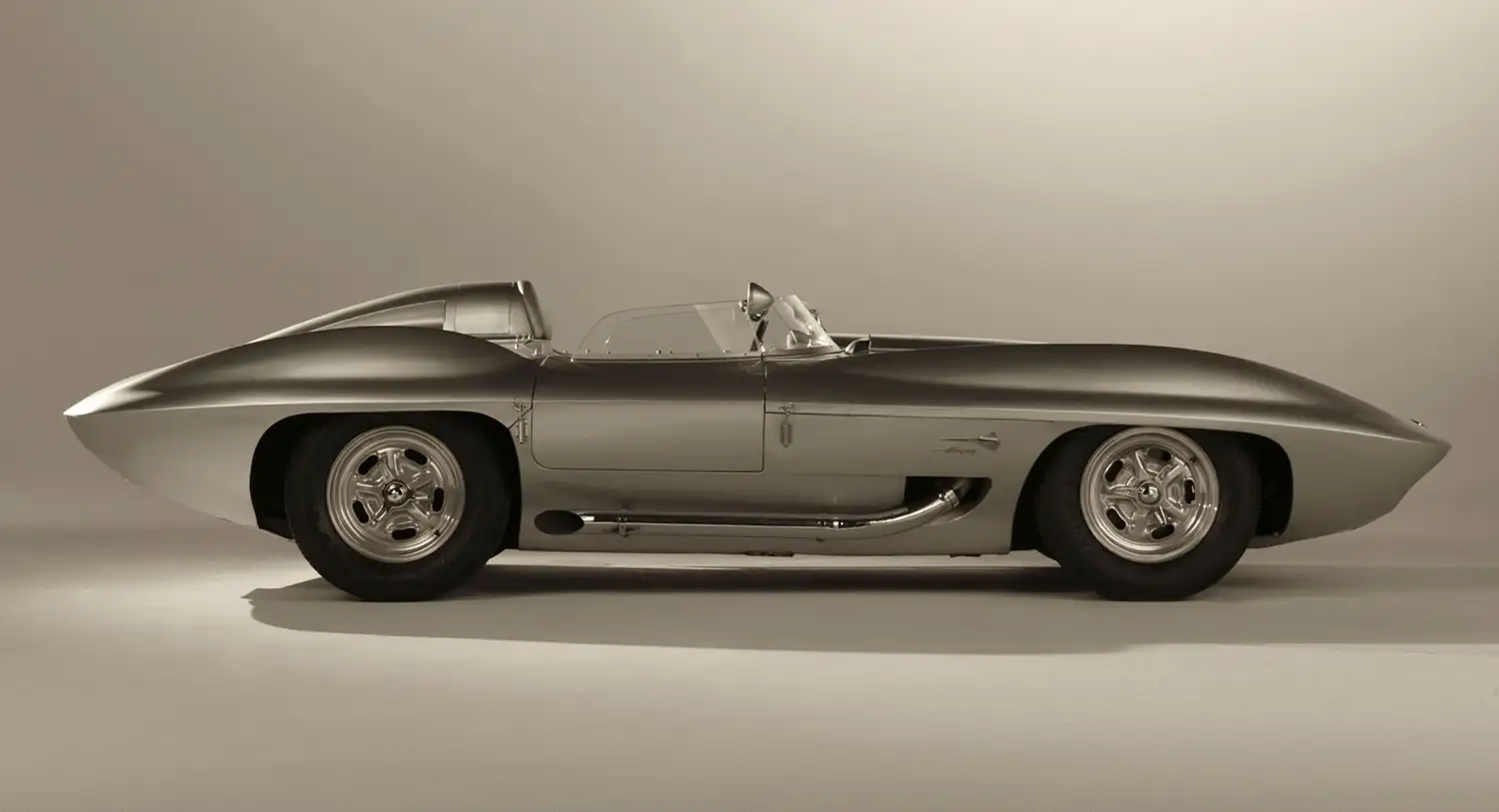
The Stingray concept debuted at the Maryland Marlboro Raceway, driven by renowned racer Dick Thompson. Despite its aerodynamic challenges, which led to occasional lift at high speeds, the Stingray made a significant impact. Thompson’s skillful driving helped secure a class championship during the 1960 SCCA season, highlighting the car’s racing potential.
From Track to Showroom
Following its successful racing career, the Stingray was retired from competition and transformed into a show car. Modifications included a new fiberglass body, the addition of a passenger seat, and the integration of Corvette badges. These changes helped the Stingray fulfill its new role as a promotional tool for the forthcoming second-generation Corvette.
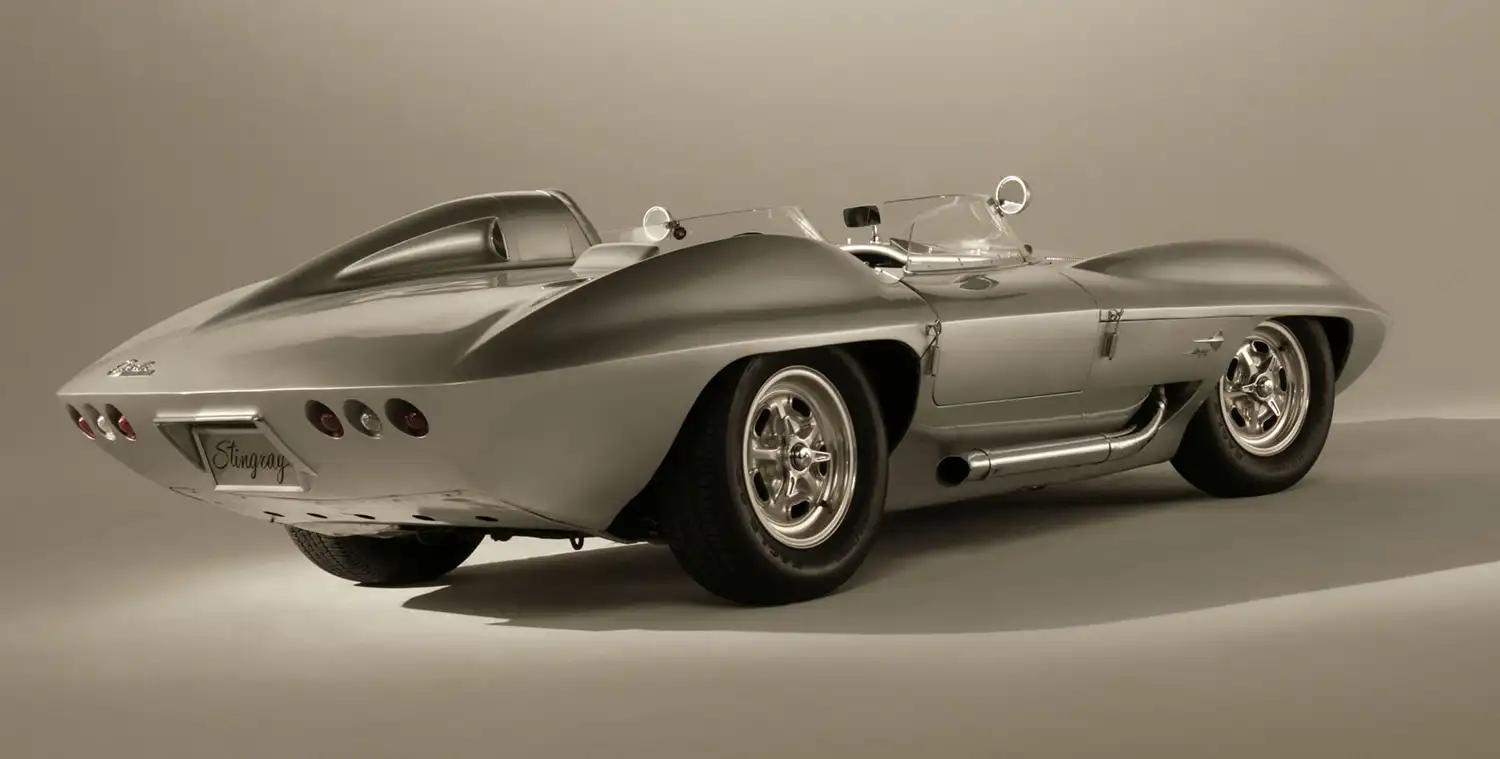
As a show car, the Stingray generated considerable excitement and interest, laying the groundwork for the Corvette’s future success. Mitchell even used the car as his personal road vehicle, adding to its storied history. During this period, the Stingray was upgraded with a 5.4-liter fuel-injected V8 engine delivering 370 horsepower and disc brakes, enhancing its performance and usability.
A Lasting Legacy
Today, the 1959 Chevrolet Corvette Stingray Concept is preserved in the GM Heritage Collection. It stands not only as a precursor to one of America’s most iconic sports cars but also as a testament to the innovative spirit of its creators. The Stingray embodies the philosophy of blending rigorous performance with exceptional design, making it a cherished piece of automotive history.
The 1959 Corvette Stingray Concept remains a symbol of American ingenuity and a reminder of the daring vision that defined the early days of Corvette design.
Source: Chevrolet
This Article use tools from Chatgpt
